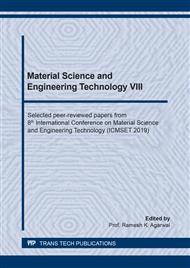p.9
p.15
p.21
p.30
p.36
p.42
p.48
p.55
p.61
Possibilities Reducing of Energy Consumption by Cast Iron Production in Foundry
Abstract:
Modern metal melting includes of cast iron production in different types furnaces with specific characteristics. Furnaces usually adopted are cupola and induction furnaces. Casting cast iron is a manufacturing process characterized by its energy-intensive nature (ie, the use of large amounts of energy per unit of product for main activities) and a long tradition. An example of the energy balance in a foundry is the design of procedures to reduce energy consumption. The most important is the consumption of energy in the production of hot metals (52%), therefore reducing the cost of preparing hot metal is especially important by reducing the energy consumption of metal melting. The most important energy cost practices are the consumption of hot metal to produce 1mt of high quality castings (often 1700 kg) and reduce the energy consumption of hot metal production that varies over a wide range (from 500 to 1300 kWh/mt). Although scientific and technological aspects are now well established, new studies seem to be needed to describe "foundry of the future", where energy and material efficiency is of great importance to ensure competitiveness alongside environmental protection. The paper presents specific procedures for reducing both economically important indicators in cupola and electric induction furnaces.
Info:
Periodical:
Pages:
36-41
Citation:
Online since:
June 2020
Authors:
Price:
Сopyright:
© 2020 Trans Tech Publications Ltd. All Rights Reserved
Share:
Citation:


